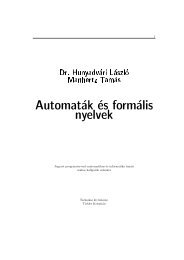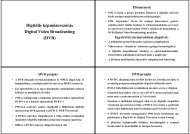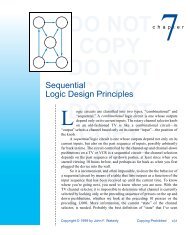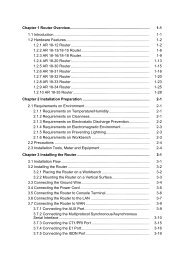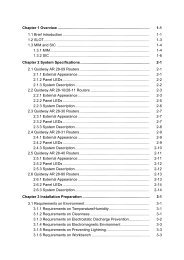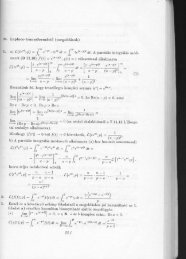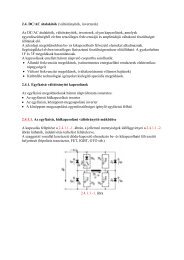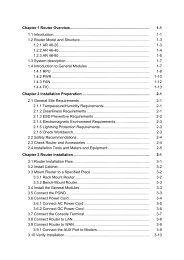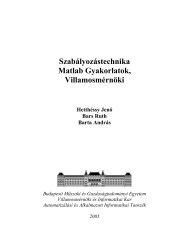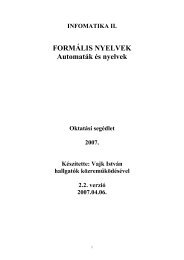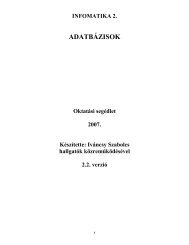chapter 8.pdf
chapter 8.pdf
chapter 8.pdf
You also want an ePaper? Increase the reach of your titles
YUMPU automatically turns print PDFs into web optimized ePapers that Google loves.
Section 8.4 Counters 601DO NOT COPYCLOCKQADOQBNOT COPYQCQDDO NOT COPYRCOCOUNT 0 1 2 3 4 5 6 7 8 9 0Figure 8-34 Clock and output waveforms for a free-running divide-by-10 counter.DO NOT COPYas provided by the 74x161. The ’161 has the same pinout as the ’163, but its 74x161CLR_L input is connected to the asynchronous clear inputs of its flip-flops.The 74x160 and 74x162 are more variations with the same pinouts and 74x160general functions as the ’161 and ’163, except that the counting sequence is 74x162modifiedDOto go to state 0 afterNOTstate 9. In other words, theseCOPYare modulo-10counters, sometimes called decade counters. Figure 8-34 shows the output decade counterwaveforms for a free-running ’160 or ’162. Notice that although the QD and QCoutputs have one-tenth of the CLK frequency, they do not have a 50% duty cycle,and the QC output, with one-fifth of the input frequency, does not have aconstantDOduty cycle. We’ll showNOTthe design of a divide-by-10 counterCOPYwith a 50%duty-cycle output later in this subsection.Although the ’163 is a modulo-16 counter, it can be made to count in amodulus less than 16 by using the CLR_L or LD_L input to shorten the normalcounting sequence. For example, Figure 8-35 shows one way of using the ’163as aDOmodulo-11 counter. TheNOTRCO output, which detects state 15,COPYis used to force74x163Figure 8-352CLOCKCLKUsing the 74x163 asRPU 1CLRa modulo-11 counterDO NOT COPY9LDwith the counting7ENPsequence 5, 6, …, 15,10ENT5, 6, ….314+5 VA QAQ0413B QBQ1DO NOT512COPYC QCQ2611RD QD Q315 74x04RCOCNT15 1 2U1CNT15_L U2Copyright © 1999 by John F. WakerlyCopying Prohibited



